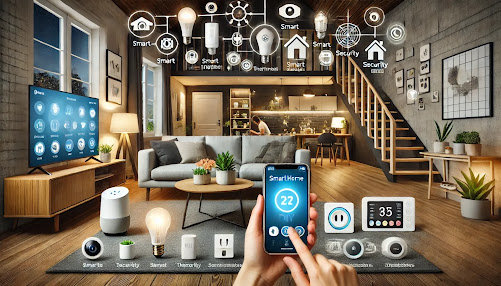How to Build Your Own Smart Home: A DIY Guide to Affordable Automation
In today’s world, the idea of having a smart home is more achievable than ever before. From voice-controlled lighting to automated security systems, building your own smart home is not just a luxury for tech enthusiasts—it’s an affordable DIY project anyone can tackle. If you're interested in creating a connected, energy-efficient home that enhances convenience and security, you're in the right place. This guide will walk you through the steps of building your own smart home, from choosing the right devices to setting everything up.
Why Build a Smart Home?
Building your own smart home offers a number of benefits:
- Convenience: Control lights, appliances, and security systems with just your voice or smartphone.
- Energy Efficiency: Save on energy costs with smart thermostats and energy-saving devices.
- Security: Monitor your home with smart cameras, doorbells, and motion sensors.
- Customization: Tailor your smart home to fit your specific needs with customizable automation.
Step 1: Start with the Basics - Choose Your Smart Home Hub
The first step in your DIY smart home project is selecting a smart home hub. This is the central system that allows all your devices to communicate with each other. Some of the most popular options include:
- Amazon Echo (Alexa): Great for voice control and compatible with a wide range of smart devices.
- Google Nest Hub: Excellent for integrating with Google services, ideal for those already using Android or Google Home.
- Apple HomeKit: The go-to for iPhone users looking for a seamless experience with strong security features.
Each hub has its own strengths, so consider your existing tech ecosystem when choosing.
Step 2: Lighting – Brighten Up with Smart Bulbs
One of the easiest ways to start automating your home is by swapping out your regular light bulbs for smart ones. Smart light bulbs allow you to control your lights with your voice, smartphone, or even automate them to turn on and off based on your routines. Look for bulbs that are compatible with your chosen smart hub, and consider options from brands like Philips Hue or LIFX.
Bonus: Some smart bulbs even change color, letting you set the mood for any occasion.
Step 3: Thermostat – Save Energy with a Smart Thermostat
A smart thermostat is a game-changer for your home’s energy efficiency. Devices like the Nest Thermostat or Ecobee allow you to control your home's temperature remotely. They learn your preferences and adjust accordingly, which can help lower your utility bills over time. You can also set up schedules to only heat or cool your home when you're there.
Step 4: Security – Protect Your Home with Smart Cameras and Sensors
When building a smart home, security should be a top priority. Smart cameras, doorbells, and motion sensors allow you to monitor your property from anywhere. Ring Video Doorbell is one of the most popular options for seeing who’s at your door in real-time, while Arlo cameras provide high-definition video and motion detection. Add smart locks and window sensors to secure your home further.
Step 5: Voice Assistants – Control Everything with Your Voice
Voice assistants like Amazon Alexa, Google Assistant, or Siri are the cornerstone of any DIY smart home. Whether you’re adjusting your thermostat, dimming the lights, or locking the doors, you can do it all hands-free. Make sure your smart devices are compatible with the voice assistant of your choice for maximum integration.
Step 6: Smart Plugs and Outlets – Automate Your Appliances
To make your home truly smart, add smart plugs and outlets to automate everything from coffee makers to fans. Simply plug your devices into these outlets, and you can control them remotely via your smartphone or voice commands. Smart plugs like TP-Link Kasa or Wemo are affordable and easy to set up.
Step 7: Build Custom Routines and Automations
Once you have your smart devices in place, the fun part begins: setting up automations. With platforms like IFTTT (If This Then That) or SmartThings, you can create customized routines. For example, you can set your lights to automatically turn on at sunset or have your thermostat lower when you leave the house. The possibilities are endless when it comes to automating your home’s functions.
Step 8: Keep Security in Mind
When building your own smart home, don't forget about security. Ensure that your Wi-Fi network is secured with strong passwords, and enable two-factor authentication for any smart devices that support it. Regularly update your devices to prevent vulnerabilities and make sure all connected devices are from trusted manufacturers.
Conclusion: Your Smart Home, Your Way
Building your own smart home doesn’t have to be complicated or expensive. With the right devices and a bit of planning, you can create a highly functional, energy-efficient, and secure home tailored to your lifestyle. From smart lighting and thermostats to security systems and voice assistants, the possibilities for home automation are endless. So, start small and gradually build your smart home step-by-step.
Remember, the best part about DIY home automation is that you can always add new devices and upgrades over time. So why wait? Start building your smart home today and experience the future of living!



No comments:
Post a Comment